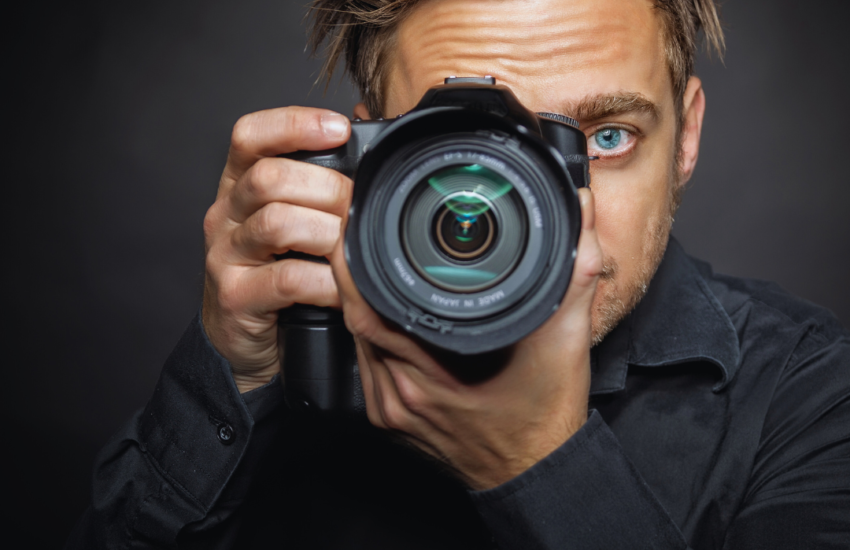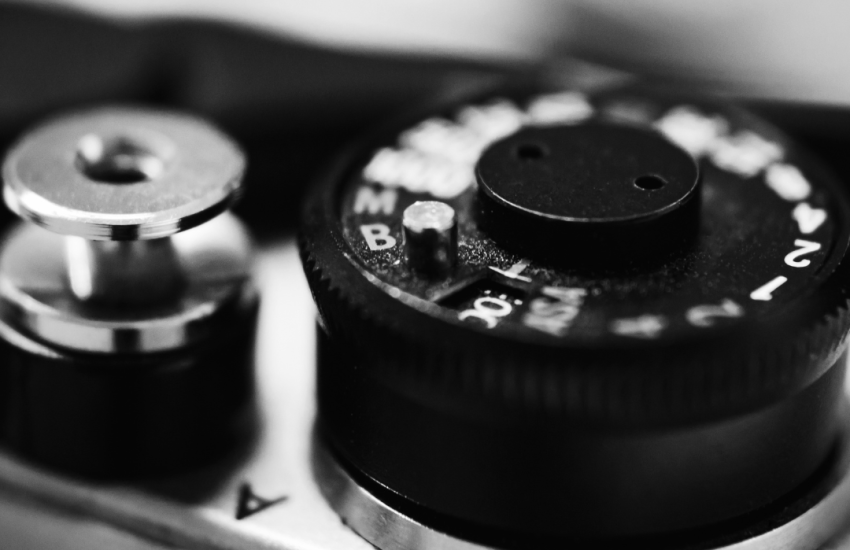Newborn Photography: Capturing Precious Moments with Professional Expertise
Newborn photography captures the delicate beauty and innocence of infants in their first days of life. Parents often seek professional photographers to create lasting memories that highlight their newborn’s tiny features and unique personality. This type of photography serves not only as a keepsake for families but also as an art form that celebrates the joy of new beginnings.
Choosing the right photographer is essential to achieve stunning results. Experienced newborn photographers understand the intricacies of working with very young subjects, ensuring safety and comfort while creating captivating images. With appropriate poses, lighting, and props, they can transform simple moments into timeless works of art.
The demand for newborn photography has grown, thanks in part to social media sharing, where families display their cherished images. The enchanting quality of these photographs can evoke emotion and nostalgia, making them a popular choice for parents wanting to document their child’s earliest days.
Understanding Newborn Photography
Newborn photography captures the early moments of a baby’s life, focusing on their delicate features and the bond with family. It encompasses various techniques for posing, lighting, and settings, emphasizing safety and comfort throughout the process.
Defining the Genre
Newborn photography is a specialized field aimed at portraying infants from birth to around three weeks old. The genre emphasizes capturing delicate expressions, soft features, and tiny details that reflect the uniqueness of each baby. Photographers often utilize natural lighting, props, and creative settings to enhance the visual storytelling aspect.
Common styles include posed newborn photography, lifestyle sessions, and candid family interactions. Each approach can showcase different emotional aspects of welcoming a new member into the family. Photographers must adapt their techniques to cater to the baby’s natural sleep cycles and comfort levels.
Significance of First Moments
The early weeks of a newborn’s life are fleeting and filled with significant milestones. Capturing these moments helps preserve memories for families, allowing them to reflect on how much their child has grown over time.
Photos from this period often become cherished family heirlooms, illustrating the bond between parents and their newborn. These images can also play a crucial role in family history, providing a visual narrative for future generations.
Additionally, professional newborn photography can create a sense of nostalgia, reminding parents of the joy and challenges of early parenthood.
Safety in Newborn Photography
Safety is paramount in newborn photography. Photographers must prioritize the well-being of the baby throughout the session. This involves using safe posing techniques, ensuring supportive props, and maintaining a comfortable environment.
To minimize risks, photographers often enlist the help of experienced assistants. They ensure the space is warm, quiet, and free from distractions.
Additionally, newborn photographers should be aware of infant vulnerabilities. Risks such as positional asphyxia and exposure to cold should be mitigated through proper planning and understanding of safe practices.
Open communication with parents about safety protocols enhances trust and ensures a positive experience.
Best Age for Newborn Photoshoots
The ideal timeframe for newborn photoshoots is within the first two weeks after birth. During this period, babies are generally sleepier and more flexible, making them easier to pose.
Photographers often recommend scheduling sessions during the baby’s first ten days. This window allows for capturing the sought-after curled poses that showcase their tiny features perfectly.
If the session occurs later, up to six weeks, flexibility may diminish, and the baby may be less likely to sleep soundly during the shoot. Nonetheless, skilled photographers can adapt to the baby’s changing needs, ensuring a successful and enjoyable experience.
Preparing for a Newborn Photoshoot
Preparation is crucial for a successful newborn photoshoot. Key elements include thorough client consultation, decisions on the location, essential gear to have on hand, and creating a soothing environment for the baby.
Client Consultation
Engaging with clients before the shoot sets the foundation for a successful session. Discuss preferences for poses, outfits, and props early on to align expectations. Understanding any concerns or specific requests from parents is essential for comfort during the shoot.
During the consultation, it’s also valuable to explore scheduling. Newborn sessions are best within the first two weeks of life, while the baby is still sleepy and flexible. Encourage parents to prepare outfits accordingly and consider their comfort as well.
Home vs. Studio Sessions
Choosing between a home shoot or a studio session impacts the feel of the photos. Studio sessions offer controlled lighting and a variety of props, creating a professional setting. Photographers can set up backdrops, lighting, and accessories tailored to their style.
On the other hand, home sessions provide a personal touch. Babies are in familiar surroundings, which can make them more relaxed. Discuss any advantages or disadvantages with parents to choose what suits them best.
Essential Equipment List
Preparation requires a well-planned equipment list to minimize disruptions. Essential items include:
- Camera: A quality DSLR or mirrorless camera.
- Lenses: A 50mm or 85mm lens to capture sharp images.
- Props: Baskets, wraps, and blankets for diverse posing.
- Lighting: Softboxes or reflectors to enhance natural light.
- Safety Gear: Spotters and bean bags for safe posing.
Being prepared will allow the photographer to respond quickly to the baby’s needs and capture beautiful moments effortlessly.
Creating a Soothing Environment
Establishing a calming atmosphere facilitates a smoother session. Keeping the room warm helps to keep the baby comfortable. Use soft lighting to create a gentle ambiance.
Consider playing soft music or white noise to soothe the baby. Parents can assist by keeping the baby fed and well-rested before the session. A relaxed baby leads to more successful poses and a happier experience for everyone involved.
Photography Techniques and Styles
Newborn photography encompasses various techniques and styles, each contributing uniquely to the final image. Understanding these elements helps in creating compelling and memorable photographs of newborns.
Posing Guidelines and Ideas
Posing is crucial in newborn photography. Safety and comfort should always come first. Common poses include the classic wrapped swaddle, where the baby appears cozy and secure. Another popular pose is the ‘froggy’ position, where the baby’s chin rests on their hands.
Photographers should also explore the use of props. Soft blankets, baskets, or beanbags can assist in achieving adorable setups. Parents can be included in family portraits, emphasizing the connection between them and the newborn.
Different angles offer variety as well—side profiles, overhead shots, and close-ups enhance the visual storytelling. Flexibility in posing ideas allows photographers to adapt to each newborn’s temperament and preferences.
Using Natural Light
Natural light is often preferred in newborn photography due to its soft and flattering qualities. Photographers should identify spaces in the home with ample window light. Early morning or late afternoon sunlight can provide ideal conditions with minimal harshness.
Positioning the baby near a window while ensuring the light falls softly on their face creates a gentle glow. Using reflectors can help bounce light and illuminate shadows.
Avoiding direct sunlight prevents unflattering highlights and overly harsh contrasts. Soft curtains can diffuse the light further, enhancing the softness of the images.
Ultimately, the aim is to capture the essence of the newborn in a calm and soft-light setting.
Portrait vs. Lifestyle Approaches
Portrait-based approaches typically focus on posed images in controlled environments. This style often involves backdrops and props to create a studio-like feel.
Lifestyle photography, on the other hand, captures more candid moments in the home environment. This style emphasizes interaction and connection among family members. It documents real-life moments that showcase the newborn within their family’s dynamics.
Both approaches have their merits. Portraits can highlight specific features and expressions effectively. Lifestyle images often tell a more personal story, ideal for presenting the newborn’s personality in a natural setting.
Photographers should choose their approach based on the family’s preferences and the atmosphere they wish to create.
Capturing Details and Macros
Focusing on details adds depth to newborn photography. Macro shots of tiny fingers, toes, and facial features highlight the delicate aspects of a newborn. This technique creates a sense of intimacy in the images.
Using a lens with a shallow depth of field helps to isolate these features, blurring the background. Close-ups should be well-lit to emphasize textures and colors.
Props like blankets or toys can enhance these detailed shots. Capturing items of significance, such as a family heirloom or an item of clothing, adds personal touches.
Including a mix of detail shots with wider photos will enrich the narrative and provide a fuller view of the newborn’s character.
Post-Processing and Editing
Post-processing is a crucial step in newborn photography. It enhances images while preserving the natural beauty of the subject. The following sections detail the essential tools and techniques that define effective editing processes for newborn photographers.
Editing Software and Tools
The choice of editing software significantly affects the quality of newborn photographs. Popular options include Adobe Lightroom, Adobe Photoshop, and Capture One.
- Adobe Lightroom: Ideal for beginners, it offers user-friendly tools for color correction, exposure adjustments, and batch processing.
- Adobe Photoshop: Provides advanced features for retouching, layering, and removing distractions.
- Capture One: Known for its tethering capabilities and superior image quality, it allows for greater control over color grading.
Additionally, many photographers utilize plugins and presets to save time and achieve consistent results.
Basic Photo Editing Workflow
A structured workflow streamlines the editing process. Following a systematic approach can save time and yield better results.
- Import and Organize: Start by importing images into the editing software and organizing them into folders.
- Culling: Review the images to select the best shots for editing, discarding any that are out of focus or poorly lit.
- Basic Adjustments: Make initial adjustments such as exposure, contrast, and white balance to enhance the image’s overall appearance.
- Detailed Editing: Focus on details like skin smoothing and removing minor blemishes without altering the baby’s natural features.
This method ensures a consistent and efficient editing experience.
Enhancing Image Quality
Improving image quality involves several techniques that maintain clarity and detail. Key actions include:
- Sharpness: Use sharpening tools carefully to enhance focus while avoiding unnatural edges.
- Color Correction: Adjust colors to maintain accurate skin tones, often using selective color adjustments.
- Noise Reduction: Apply noise reduction settings to minimize grain, particularly in low-light settings.
These enhancements improve the final image while retaining the authentic look of newborns.
Preserving Authenticity
Maintaining the natural essence of newborn photography is vital. Post-processing should enhance rather than distort reality.
- Softening Skin: Use gentle retouching techniques to eliminate temporary blemishes while preserving skin texture.
- Avoiding Over-Editing: Resist the temptation to apply excessive filters or effects that alter the subject’s appearance.
- Natural Posing: Ensure that any adjustments to pose or expression look genuine and not forced.
This approach fosters authenticity, allowing the unique personality of each newborn to shine through the final images.
Building a Portfolio
A strong portfolio is essential for a newborn photographer, showcasing their unique style and ability to capture special moments. Key aspects include selecting impactful images, establishing an online presence, gathering client testimonials, and networking effectively.
Selecting Key Images
Choosing the right images is fundamental to building a compelling portfolio. Photographers should pick a mix of posed and candid shots that highlight their best work.
It’s important to showcase diverse settings and techniques, including natural lighting and studio setups.
Aim for a cohesive look, with images that complement each other in style and tone. Selecting around 15-20 outstanding images can create a powerful narrative that appeals to potential clients.
Regularly updating the portfolio ensures it remains relevant and reflective of the photographer’s evolving skills.
Online Presence and Galleries
Creating an engaging online presence is crucial for attracting clients. A professional website is the cornerstone, featuring an organized gallery of selected works. Include an easy-to-navigate layout that allows visitors to explore different styles and themes.
Utilizing social media platforms can expand reach and enhance visibility. Instagram and Pinterest are particularly effective for photographers, with an emphasis on visually striking content.
Incorporating a blog can also draw attention by sharing behind-the-scenes insights and tips for parents.
Ensure that all platforms reflect a consistent brand identity to strengthen recognition and professionalism.
Client Testimonials
Client testimonials can significantly enhance the portfolio’s credibility. Gather feedback after every session and approach clients politely to share their experiences.
Display testimonials prominently on the website, using quotes and images from the sessions. This builds trust with prospective clients, providing insight into the overall experience and results.
Consider video testimonials for a more personal touch, allowing satisfied clients to express their joy. Regularly updated testimonials can also reflect the photographer’s consistent quality and service.
Networking with Parenting Groups
Engaging with local parenting groups can open doors to new opportunities. Attend community events, workshops, or meetings to connect directly with potential clients.
Offer to provide mini-sessions or collaborate on events, introducing photography services in a friendly environment. Share tips and advice, establishing credibility within the group.
Online forums and social media parenting groups can also be effective. Actively participate, answer questions, and share expertise without being overly promotional, fostering genuine relationships.
Building rapport with parents can lead to referrals and lasting connections in a competitive industry.
Marketing Your Newborn Photography Business
Effective marketing is essential for attracting clients to a newborn photography business. Key strategies include identifying the target audience, utilizing social media, forming collaborations, and offering compelling packages.
Target Audience and Branding
Identifying the target audience is critical for newborn photographers. They typically cater to new parents, maternity clients, and families expecting a child. Understanding their needs, preferences, and purchasing power allows for tailored marketing messages.
Creating a strong brand helps differentiate a photographer from competitors. A cohesive brand identity includes a unique logo, consistent color schemes, and a clear visual style. This branding should resonate with the emotional aspects of parenthood and family connection, ensuring that it appeals to expectant and new parents alike.
Effective Social Media Strategies
Social media platforms are powerful tools for marketing newborn photography businesses. Photographers should focus on visually oriented platforms like Instagram and Pinterest. Sharing high-quality images and behind-the-scenes content can foster engagement and attract potential clients.
Using hashtags strategically enhances visibility. Popular tags like #newbornphotography or #maternityphotography can help reach a broader audience. Regular posting schedules and engagement with followers through comments and direct messages build relationships and trust.
Collaborations and Partnerships
Forming partnerships with local businesses can amplify marketing efforts. Collaborations with maternity boutiques, baby stores, or health clinics allow access to a broader audience. Joint promotions or referral programs can create a win-win situation for both parties.
Participating in community events or fairs can increase visibility as well. Setting up a booth to display work, offer mini-sessions, or distribute promotional materials can attract interested parents and build local connections.
Offering Packages and Discounts
Creating attractive photography packages can entice potential clients. These packages may include different session lengths or edited photo numbers, catering to diverse budgets. Offering themed sessions, such as holiday or milestone photography, can also appeal to a wider audience.
Discounts or special offers for first-time clients encourage bookings. For example, a new client could receive a percentage off their first session or a complementary print with their package. This approach helps establish a loyal customer base and encourages positive word-of-mouth referrals.



